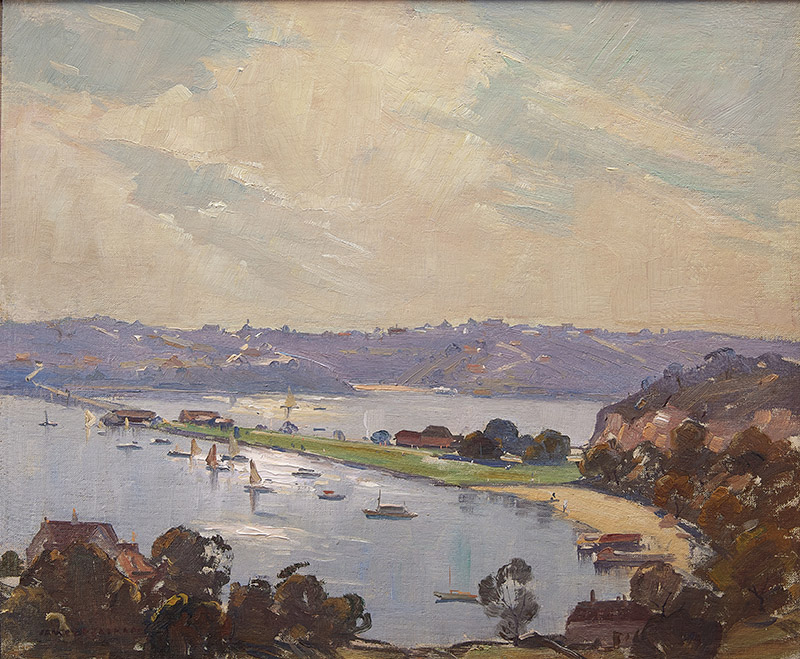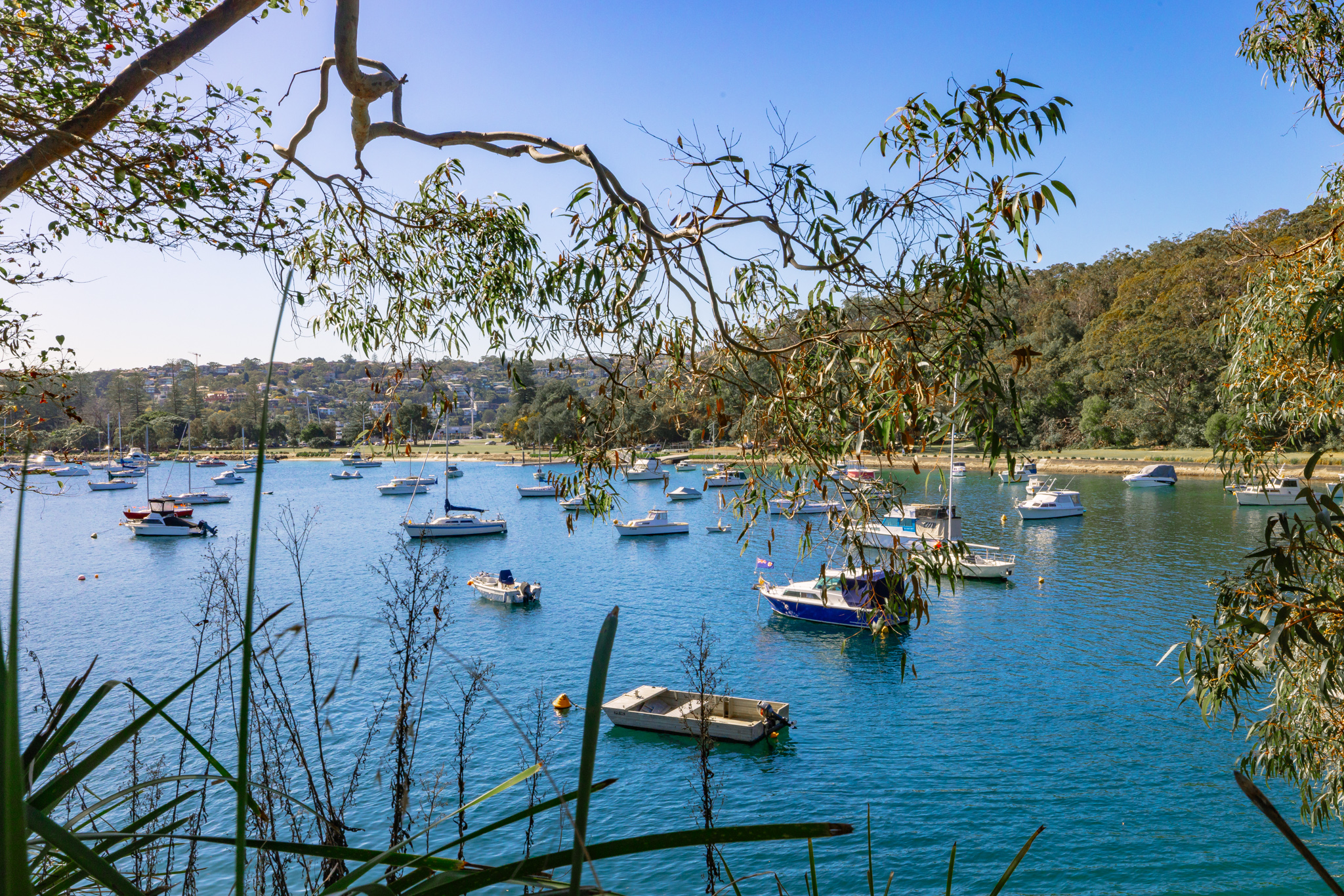James R Jackson
The Spit, Sydney, 1935

Mosman Art Trail Sign 12 located on foreshore track 80 mtrs north of sign 11.
Listen to an audio recording, read by Claudia Karvan, to learn more about this artwork.
James Ranalph Jackson was a veteran open air painter of Sydney Harbour, especially of the Spit and of Middle Harbour, subjects that he painted consistently from 1910 until 1970, recording many important changes in the built environments of the foreshore. In 1921, after his first solo exhibition, an art critic commented: ‘Jackson is, above all things, a painter of Sydney Harbour. His work lies somewhere midway between that of the realists and the romanticists - Jackson does not attempt imaginary flights, but he can catch exactly the feeling that attaches to some far-off blue patch of water [...] all on a hot and hazy midsummer afternoon.’ 1 Although this assessment was written of Jackson’s earlier works, the artist has again captured that spirit of a midsummer noon with the brilliant reflected sunlight viewed from a high vantage point on Beauty Point, in The Spit, Sydney.
After an itinerant existence during the Depression, Jackson settled into a Mosman studio on Spit Road above Chinaman’s Beach in 1936.2 The spectacular vista of the narrow Spit sandbar crossing Middle Harbour had captivated Jackson, featuring in many of his most celebrated paintings, including Middle Harbour from Manly Heights, 1923, in the collection of the Manly Art Gallery and Museum and Drying the Sails, The Spit, 1935, in the collection of The Art Gallery of New South Wales. These lyrical and proud images of the burgeoning city of Sydney contributed to the creation of a certain nationalistic sentiment during the interwar period, supported and disseminated by conservative groups such as the Royal Art Society of New South Wales, of which Jackson was a fellow from 1922, and becoming its lifetime president in 1965.
Deftly painted with quick confident strokes and handling of colour, The Spit, Sydney, glitters with light. Filling the middle ground in a uniform block of lilac paint, the shaded hills of Seaforth and Balgowlah Heights are indistinct, highlighted with pale streaks tracing major roads snaking up the headlands and a brilliant stretch of yellow at water level for the immaculate Clontarf Beach. A keen sailor, Jackson’s main subject in The Spit was not the new utilitarian bridge across the bay, but a group of boats moored at Beauty Point, dotted throughout the centre of the painting, and a couple of diminutive figures walking along the mudflat beach.
In 1935, much of the foreshore of Beauty Point was slated for land-reclamation works to accommodate an expansion of Spit Road. By 1965, the new Spit West reserve begun to extend the original sea wall, causing loss of the mud flat shore in the lower right hand corner of Jackson’s painting. 3 Furthermore, the first Spit Bridge, built and inaugurated some ten years earlier is barely discernible in the distance of Jackson’s painting, perhaps reflective of the public criticism of its ‘Meccano’ design.4 More than half the painting is devoted to the sky, exploring cloud patterns thinly painted with the square end of his brush, following with vigorous dynamism the changing light and cloud forms above Middle Harbour.
1 ‘Jackson’s Oil Paintings. First One-Man Show’, The Daily Telegraph, Sydney, 15 February 1921, p. 3
2 Pearce, B., ‘Jackson, James Ranalph (1882 - 1975), Australian Dictionary of Biography, Australian National University, Canberra, vol. 14, 1996
3 Souter, G., Mosman. A History, Melbourne University Press, 1994, p. 290
4 ‘World’s Ugliest. The Bridge of Sticks’, The Sun, Sydney, 23 December 1924, p. 1
Text by Lucie Reeves-Smith.
PROVENANCE
Private collection
Christie’s, Melbourne, 25 August 1992, lot 71 (as ‘The Spit, Middle Harbour’)
Balnaves Collection, Sydney, acquired from the above
Mosman Art Gallery, Sydney, a gift from the above in 2011
Photo credit Jacquie Manning
JAMES RANALPH JACKSON
(1882 - 1975)
THE SPIT, SYDNEY, 1935
oil on canvas
45.0 x 55.0 cm
signed lower left: James R Jackson






